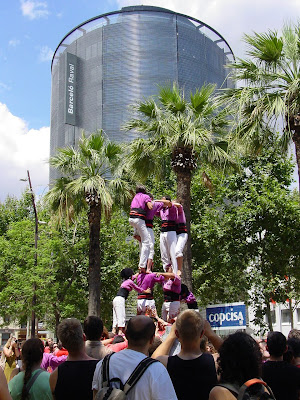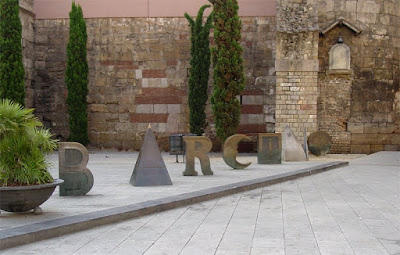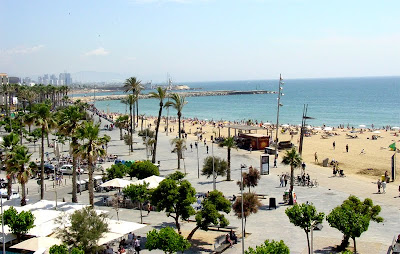El Raval
 Like most of the old town, the Raval quarters have a mix of old and new buildings, some very old and in need of repair. Often, considerable work needs to be done to properties here, although most quality estate agencies will steer clear from this type of living space. The neighbourhood has an extremely high immigrant population, meaning it's easy to find International cuisine and halal butchers alongside traditional neighbourhood shops and bakeries. El Raval can be noisy, given it's central location, and certain areas can be poorly lit - something to consider when looking for an apartment here. Public transport is very close with 5 main metro stations flanking the quarter - Sant Antoni (next to the city's biggest market bearing the same name), Liceu on Las Ramblas, next to the Opera House, Parallel on the opposite side of the neighbourhood, Drassanes at the bottom of las Ramblas towards the Port and Catalunya, at the top of Las Ramblas, the city's main square.
Like most of the old town, the Raval quarters have a mix of old and new buildings, some very old and in need of repair. Often, considerable work needs to be done to properties here, although most quality estate agencies will steer clear from this type of living space. The neighbourhood has an extremely high immigrant population, meaning it's easy to find International cuisine and halal butchers alongside traditional neighbourhood shops and bakeries. El Raval can be noisy, given it's central location, and certain areas can be poorly lit - something to consider when looking for an apartment here. Public transport is very close with 5 main metro stations flanking the quarter - Sant Antoni (next to the city's biggest market bearing the same name), Liceu on Las Ramblas, next to the Opera House, Parallel on the opposite side of the neighbourhood, Drassanes at the bottom of las Ramblas towards the Port and Catalunya, at the top of Las Ramblas, the city's main square. El Gotico

Barcelona's Gothic Quarter is a mainly pedestrian area of winding streets, separated from El Raval by the old riverbed which is now Las Ramblas. Like El Raval, there are many old buildings, often with tiny stairwells, and lifts are not very common - often a major setback when looking for a higher placed apartment. The area, however, has some of the most beautiful interiors, with old, tiled floors and high beamed ceilings and often a few gems can be found - albeit at a preety price. The Gothic Quarter is the historical centre of Barcelona - the Roman citadel called "Barcino" formed on top of the Mons Taber hill, and oozes history. Natural light source can again be a problem, and if you plan on using your own car, this can be a hindrance, as many streets are pedestrian only. Public transport is good, with Liceu, Drassanes, Catalunya and Jaume I all close by to walk.
El Borne
El Borne is a fairly trendy place to live, with many art galleries or small exhibition spaces nestled amongst the small streets. The area has a large market, which is under construction, but small shops and supermarkets are taking the trade in the meantime. Traditionally the Jewish Quarters of the city, the area has many old factories and a mix of apartments, lofts (larger, often two-tier dwelling spaces, which can be ground floor, despite what the name suggests) and the area also borders the Cuitadella Park - Barcelona's garden. As with the previous two areas, Borne can have tiny, dimly lit streets, so it's wise to choose a well-lit apartment. Metro lines serving this area include Arc de Triomf, Urquinaona and Jaume I.
Barceloneta

The old fisherman's quarters of La Barceloneta are a tidy arrangement of parallel streets sitting right on top of Barcelona's first beach. These narrow streets have small dwellings so don't expect to find large apartments here - they are few and far between. Barceloneta has a large market, and not surprisingly is a great place to go for seafood, or buy fish. The area can get noisy with tourists visiting the beach at all hours, and the main draw to living here would be its close proximity to the beach - literally 1 minute's walk. Barceloneta relies perhaps more on the bus network than the metro, although the metro station "Barceloneta" does stop at the border.
Looking for a Long term rental in Barcelona ? Contact Modus Vivendi real estate in Barcelona to talk about some options, they'll be happy to help find a place to fit your needs and budget.




0 comments:
Post a Comment